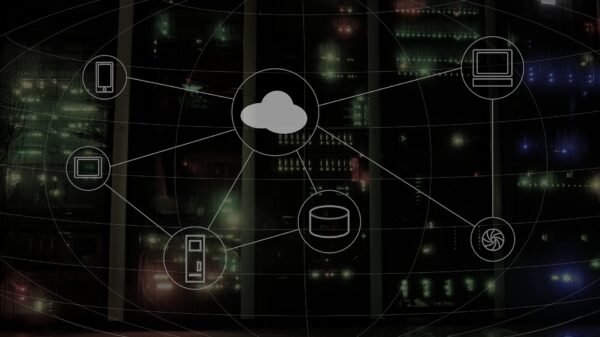Robotic Process Automation (RPA) in 2023: Advancements and Applications
Robotic process automation (RPA) is the use of a technology that enables staff members in an organization to automate routine, easy operations. Automating tedious and time-consuming activities, it may help your firm become more productive and efficient. RPA software may be used to automate tasks like assistance with customers, data input, and accounting since it is made to seem like human interaction. Additionally, during the coming few years, its popularity will only increase. Automation, cloud computing, robots, and artificial intelligence (AI) advancements have accelerated the uptake of new technologies across sectors. Because of its simple interface with additional systems, simple to operate functionality, and applicability to routine operations across many business divisions, robotic process automation (RPA) has experienced an explosive expansion. The need for RPA has skyrocketed in industries with high transaction volumes, such as banking and disputes processing. Interest in enterprises of all sizes is increasing at the moment.
RPA (robotic process automation).
Robotic process automation (RPA) is a software technology that enables individuals to design automated processes to replace the monotonous, repetitive operations often carried out by humans. Software robots access systems using APIs, built-in connections, or direct function calls and traverse software programs like a human would work with a mouse and a keyboard.
RPA software tools come included with the following features:
- Low-code capability for creating automation scripts
- Adaptation to business applications
- The ability to orchestrate, administer, configure, monitor, and secure
Need of RPA
RPA is being used as a strategic solution by businesses in many sectors and industries to increase operational effectiveness. The roles with the highest adoption rates include risk management, accounts payable, finance, back office, and front office. Chatbots and AI assistants are also useful in these areas. Companies now use RPA in conjunction with AI, machine learning, and other technologies to enhance the value of data-driven decision-making.
Are you in charge of a small or small to the medium-sized company? If so, there is a good chance that you will require an RPA system. In 2023, many firms are struggle with the following issues:
- poor performance.
- Low conformity.
- Low efficiency.
- poor client service.
- Not that great a working environment.
The positive aspect is that you can quickly address these issues and achieve major advancements in each industry using an RPA. Additionally, a simple and automated procedure is at the heart of this. Additionally, you’ll be able to conserve money and time.
Where will RPA take place in 2023?
Business units that use RPA to automate processes are clearly changing. New advantages are being discovered in departments like finance, human resources, and sales as RPA utilisation spreads throughout the company. Early automation tended to concentrate on specific phases within bigger processes, but as RPA technology has advanced and business stakeholders have been more successful at delegating tasks to robots, there has been an increase in end-to-end process automation. Finance end-of-day computations are a good illustration. Additionally, automation is demonstrating its value in performance management, learning and recruitment procedures, and talent development.
RPA is anticipated to become an integral component of several software systems. Commoditization, enterprise software mergers and acquisitions for organic and inorganic development, and new market entrants will help this further. All of these elements will broaden the RPA market’s appeal.
RPA’s Business Benefits
It’s clear why RPA, also known as robotic process automation, has become increasingly popular appeal in the commercial sector.
Automating monotonous operations can benefit firms by allowing staff to concentrate on more vital duties. RPA can save expenses while increasing accuracy and consistency.
Additionally, it can increase client satisfaction by offering better service and quicker turnaround times. In simple terms, RPA is a great business solution!
Increasing the Productivity of Your Business
Let robots do the tasks that come in the way of humans doing what they do best, and you have all the advantages of RPA automation.
Employees spend a lot of time performing tasks like importing and exporting data between business systems that don’t require them to use their knowledge. Consequently, because manual activities take time and effort, employees are unable to accomplish as much in a single day.
RPA alters this and, when designed appropriately, may increase a team’s productivity by 40% to 60%.
Lastly, you may do more in a shorter amount of time by dividing low-level and back-office work between humans and robots.
Enhancements to Efficiency
RPA may produce more than three times as much as a human employee since it is available around-the-clock, every day of the week. The company does not need to train the employee when the process has to be changed; instead, it only needs to modify the rules that were first provided (update the script). RPA also cuts down on training costs and saves time.
Reliability Enhancements
RPA may also significantly increase the precision of crucial procedures since it eliminates the possibility of human mistake. If employees properly educate software robots, they can do tasks quickly and accurately.
Enhancements to Data Security
If you have experience in business, you are aware of the significance of data. Data is the lifeblood of every business or organisation.
RPA provides better data security. RPA may decrease human error and increase accuracy by automating repetitive jobs and procedures. RPA can also assist in reducing the need to keep sensitive data in insecure areas. Businesses may use RPA to feel secure about the security and safety of their data.
Furthermore, given the frequency of data breaches and leaks, managers can worry about the safety of such systems. However, the likelihood of leakage between platforms is quite minimal if the RPA settings are carefully controlled.
As a result, selecting an infrastructure that has been properly developed and is constantly updated will provide you more security-related peace of mind.
And last, RPA is a crucial tool for any company wanting to improve data security.
Uses of RPA
RPA may be applied in many contexts to automate manual operations.
It works effectively for routine, rule-based jobs that don’t involve making a lot of decisions.
- Data input, report preparation, claims processing, and other related operations may be automated with RPA.
- RPA may also be used to manage time-sensitive operations, such as keeping tabs on inventory levels or following up on orders.
- RPA may significantly increase productivity and efficiency in any setup where repetitive tasks are presently being carried out by manual workers.
What Is the Difference Between RPA and AI?
A computer-controlled robot that can mimic human behavior is known as an RPA. To perform a range of operations, transactions, and procedures across various software platforms, they employ preset activities and business rules. Without involving humans, the desired result may be obtained with RPA.
Artificial intelligence (AI), on the other hand, refers to devices or programs that can mimic human thought. They do the same or even greater degree of analytics and insight production as a person would.
Is Robotic Process Automation the same as Artificial Intelligence to finish? It is definitely not exactly the same and there is a big difference. AI prefers to follow its own logic by locating a better answer, much like an intelligent individual, whereas Robotic Process Automation utilises a pre-written program or algorithm to carry out a task.
The fact that both systems are computer programs designed to meet human requirements is their sole point of commonality.
Principal business motivations for RPA
RPA’s expansion is fueled by a number of factors, including:
According to UiPath, a track record of delivering up to 80% cost reduction. Additionally, RPA software has demonstrated that it may reduce cumulative expenses by an additional 20% while still generating a favourable return on investment after a year of installation.
Improved compliance and uniformity in operations (along with easy audibility of findings) and increased accuracy through “rule follow” coding
the capacity to free up human workers from menial and repetitive tasks so they may embark on more complex, cognitively demanding job duties.
RPA’s cost will decline as service providers achieve economies of scale and provide more cloud-based subscription options. They will also see an improvement in ROI and a decrease in the average cost per seat.
What are the main characteristics and advantages of RPA?
The following advantages of RPA:
Seamless data entry and capture interaction with an external system.
Streamlining the automated rule-based framework’s execution.
Ability to reduce physical labour and paper-based tasks.
Real-time, cross-platform collaboration with fewer overlaps and misunderstandings
decreased cost.
Future prospects for RPA
The adoption rate across sectors is projected to be further boosted by new capabilities like automated lifespan administration, management of workloads, credentials management, and Citrix automation. As part of analysing the effectiveness of their RPA architecture, businesses are also likely to reassess the automation activities they have already completed.
RPA has undoubtedly reached its full commercial potential. However we will still be talking about it for a while as more businesses use the cost savings from their initial RPA achievements to invest in complementing technologies like adaptive recognition of characters and intelligent decision support. The main RPA platforms will keep improving their technological capabilities to increase the processes that robots can effectively complete.
Conclusion
The use of robotic process automation (RPA) to increase company efficiency is becoming more and more common. It is now much more crucial as a tool in the commercial sector in 2023.
RPA can automate time-consuming, straightforward repetitive processes that don’t need human judgment. Employees may now concentrate on higher-value tasks because of this. Using RPA in your company has a variety of advantages, including enhanced customer service, cost savings, and higher productivity.




















































Comment Template